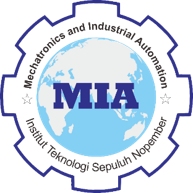Performance of Workability and Compressive Strength on Self-Compacting Geopolymer Concrete Based On High-Calcium Fly Ash With Addictive Admixture
Abstract
Keywords
Full Text:
PDFReferences
Y. Tajunnisa, M. Sugimoto, T. Sato, and M. Shigeishi, “A study on factors affecting geopolymerization of low calcium fly ash,” International Journal of GEOMATE, 2017, doi: 10.21660/2017.36.84153.
Y. Tajunnisa, R. Bayuaji, N. A. Husin, Y. N. Wibowo, M. Shigeishi, and C. Author, “Characterization Alkali-Activated Mortar Made,” vol. 17, no. 60, pp. 183–189, 2019.
N. A. Husin et al., “THE EFFECT OF ADMIXTURE VARIATIONS ON WORKABILITY AND COMPRESSIVE STRENGTH OF GEOPOLYMER CONCRETE FLY ASH BASED WITH HIGH CALCIUM CONTENT,” International Journal of GEOMATE, vol. 22, no. 92, Apr. 2022, doi: 10.21660/2022.92.j2333.
T. G. Ushaa, R. Anuradha, and G. S. Venkatasubramani, “Performance of self-compacting geopolymer concrete containing different mineral admixtures,” International Journal of Civil Engineering, vol. 2, no. 10, pp. 6–8, 2015, doi: 10.14445/23488352/ijce-v2i10p102.
Y. J. Patel and N. Shah, “Development of self-compacting geopolymer concrete as a sustainable construction material,” Sustainable Environment Research, vol. 28, no. 6, pp. 412–421, 2018, doi: 10.1016/j.serj.2018.08.004.
M. E. Gülşan, R. Alzeebaree, A. A. Rasheed, A. Niş, and A. E. Kurtoğlu, “Development of fly ash/slag based self-compacting geopolymer concrete using nano-silica and steel fiber,” Construction and Building Materials, vol. 211, pp. 271–283, 2019, doi: 10.1016/j.conbuildmat.2019.03.228.
L. Nishanth and Dr. N. N. Patil, “Experimental evaluation on workability and strength characteristics of self-consolidating geopolymer concrete based on GGBFS, flyash and alccofine,” Materials Today: Proceedings, no. xxxx, 2021, doi: 10.1016/j.matpr.2021.10.200.
S. Gumalang, S. E. Wallah, and M. D. J. Sumajouw, “Pengaruh Kadar Air dan Superplasticizer pada Kekuatan dan Kelecakan Beton Geopolimer Memadat Sendiri Berbasis Abu Terbang,” Jurnal Ilmiah Media Engineering, vol. 6, no. 3, pp. 574–582, 2016, doi: 10.7498/aps/62.010302.
C. Wang, F. Kong, and L. Pan, “Effects of polycarboxylate superplasticizers with different side-chain lengths on the resistance of concrete to chloride penetration and sulfate attack,” Journal of Building Engineering, vol. 43, no. May, p. 102817, 2021, doi: 10.1016/j.jobe.2021.102817.
S. K. Rahman and R. Al-Ameri, “A newly developed self-compacting geopolymer concrete under ambient condition,” Construction and Building Materials, vol. 267, p. 121822, 2021, doi: 10.1016/j.conbuildmat.2020.121822.
T. Phoo-Ngernkham, C. Phiangphimai, N. Damrongwiriyanupap, S. Hanjitsuwan, J. Thumrongvut, and P. Chindaprasirt, “A Mix Design Procedure for Alkali-Activated High-Calcium Fly Ash Concrete Cured at Ambient Temperature,” Advances in Materials Science and Engineering, vol. 2018, 2018, doi: 10.1155/2018/2460403.
N. A. Husin, R. Bayuaji, Y. Tajunnisa, M. S. Darmawan, and P. Suprobo, “Performance of high calcium fly ash based geopolymer concrete in chloride environment,” International Journal of GEOMATE, vol. 19, no. 74, pp. 107–113, 2020, doi: 10.21660/2020.74.56966a.
P. U. Praveen and K. Srinivasan, “Self-compacting geopolymer concrete - A review,” IOP Conference Series: Materials Science and Engineering, vol. 263, no. 3, 2017, doi: 10.1088/1757-899X/263/3/032024.
Y. Tajunnisa, M. Shigeishi, R. Bayuaji, and M. S. Darmawan, “Reliability of alkali-activated and Portland cement mortar under compressive test by acoustic emission,” International Journal of GEOMATE, vol. 17, no. 60, pp. 197–203, 2019, doi: 10.21660/2019.60.70515.
ASTM C494/C494M-19, “Standard Specification for Chemical Admixtures for Concrete,” ASTM International, vol. 04, pp. 1–15, 2019.
M. S. Darmawan, R. Bayuaji, M. Rosanti, Y. Tajunnisa, and N. A. Husin, “the Setting Time Pattern of High Calcium Based Geopolymer Paste Using Additive Material,” no. January, pp. 309–315, 2020.
Y. Tajunnisa, M. Sugimoto, T. Sato, J. Jaya, and M. Shigeishi, “CHARACTERIZATION OF LOW CALCIUM,” no. May, 2016.
Y. Tajunnisa et al., “Performance of alkali-activated fly ash incorporated with GGBFS and micro-silica in the interfacial transition zone, microstructure, flowability, mechanical properties and drying shrinkage,” AIP Conference Proceedings, vol. 1887, 2017, doi: 10.1063/1.5003517.
U. Rattanasak and P. Chindaprasirt, “Influence of NaOH solution on the synthesis of fly ash geopolymer,” Minerals Engineering, vol. 22, no. 12, pp. 1073–1078, 2009, doi: 10.1016/j.mineng.2009.03.022.
N. Kumar Verma, M. Chakradhara Rao, and S. Kumar, “Effect of molarity of NaOH and alkalinity ratio on compressive strength of geo-polymer concrete,” Materials Today: Proceedings, no. xxxx, 2022, doi: 10.1016/j.matpr.2022.03.687.
T. Phoo-ngernkham et al., “Low cost and sustainable repair material made from alkali-activated high-calcium fly ash with calcium carbide residue,” Construction and Building Materials, vol. 247, p. 118543, 2020, doi: 10.1016/j.conbuildmat.2020.118543.
T. Phoo-ngernkham, S. Hanjitsuwan, N. Damrongwiriyanupap, and P. Chindaprasirt, “Effect of sodium hydroxide and sodium silicate solutions on strengths of alkali activated high calcium fly ash containing Portland cement,” KSCE Journal of Civil Engineering, vol. 21, no. 6, pp. 2202–2210, 2017, doi: 10.1007/s12205-016-0327-6.
EFNARC, “EFNARC The European Guidelines for Self-Compacting Concrete,” The European Guidelines for Self Compacting Concrete, no. May, 2005.
DOI: http://dx.doi.org/10.12962%2Fj23378557.v9i1.a16237
Refbacks
- There are currently no refbacks.
This work is licensed under a Creative Commons Attribution 4.0 International License. IPTEK The Journal of Engineering published by Pusat Publikasi Ilmiah, Institut Teknologi Sepuluh Nopember.
Please contact us for order or further information at: email: iptek.joe[at]gmail.com Fax/Telp: 031 5992945. Editorial Office Address: Pusat Riset Building 6th floor, ITS Campus, Sukolilo, Surabaya 60111, Indonesia.








